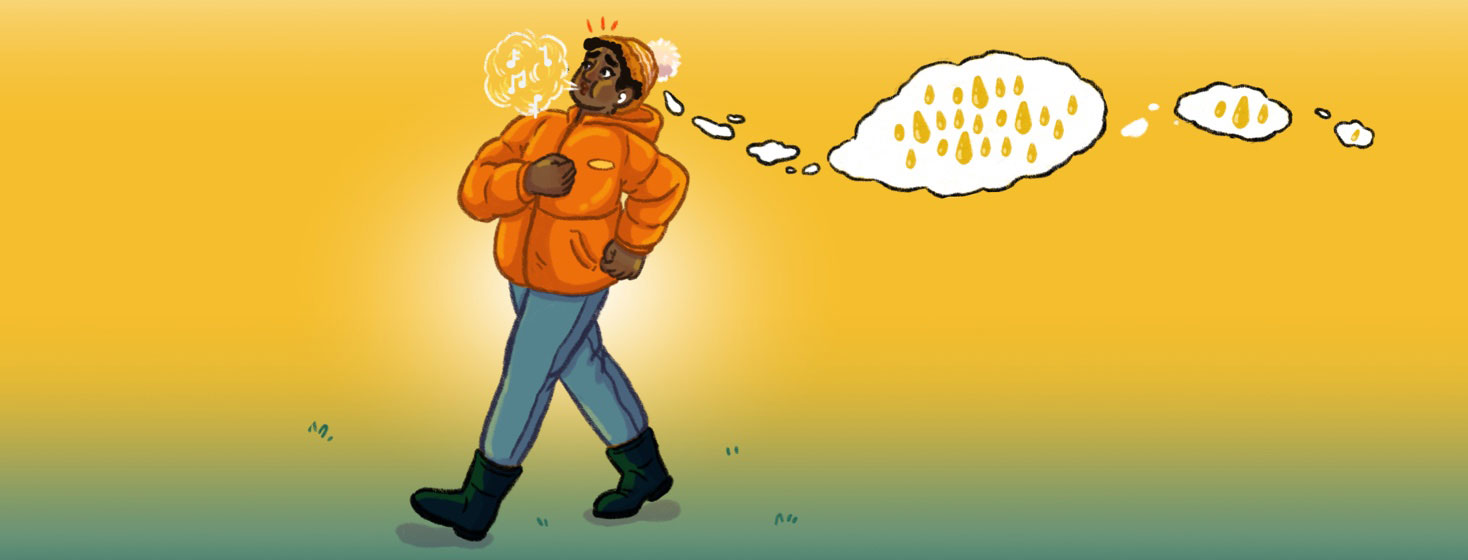Coping With Incontinence
Last week, I was jamming to Taylor Swift's new album as I surveyed the adult diaper aisle at the grocery store. Out of the corner of my eye, I noticed another shopper gesturing in my direction.
I pulled out an earbud, and the woman smiled at me. "Good for you. It's so rare to see young people shopping for their elders."
I blinked in confusion, wondering how my shopping cart screamed "geriatric." I looked at my sour gummy worms, potato chips, frozen strawberries, and energy drinks. Then, I blushed as realization hit me.
The woman had already bid me good night and walked down the aisle, but I didn't have the words to correct her even if she was still right in front of me.
Most adult diapers are advertised for elderly people. The well-meaning shopper must have assumed I was shopping for an older person.
I understand her confusion. After all, 75% of women 65 or older report incontinence issues.1
With my baby face and my Converse, I certainly don't look like the typical consumer for incontinence products. But I'm part of a taboo group: the 50% of adult women who, like me, struggle with bladder issues.
As my endometriosis symptoms have developed, I have experienced more urine leaks during my daily life. Many people with endometriosis have problems controlling their bladder.
These issues can vary throughout my menstrual cycle. When I'm on my period, I tend to leak. These changes are not uncommon.
How does the menstrual cycle impact urinary incontinence?
During menstruation, hormone levels and muscle contractions can cause more pressure in your abdomen, which puts extra stress on your pelvic muscles and your urethra. This pressure can make it harder to hold your bladder, increasing those sudden "Gotta go!" feelings.2
But endometriosis can also impact your urination. Around 44% of people who have endometriosis experience lower urinary tract symptoms. These symptoms can include:3
- Feelings of urgency
- Discomfort when trying to hold your bladder
- Burning or pain when peeing
- Frequent urination
- Feeling like your bladder is still full even after you've peed
Although this issue is not rare, it can indicate serious medical complications. Incontinence and pain upon urination can indicate a urinary tract or kidney infection. Additionally, bladder endometriosis occurs when endometrial tissue grows on your bladder. If your endometriosis has spread to your bladder, the inflamed tissue can cause pain and incontinence. A doctor can help pinpoint the cause of your incontinence.
Taking the shame out of urination
That night when I was shopping, I had been considering pads or absorbent guards that I could wear during a long-haul flight. The options were not promising.
The briefs and diapers stocked on the shelves looked bulky and did not seem like they'd feel very comfortable when paired with my usual wardrobe of jeggings and crop tops.
While I'm still in my twenties, I've begun navigating life with urinary incontinence. I do not yet know if I have developed bladder endometriosis, but I'm monitoring my symptoms with my doctor. In the meantime, I've begun carrying extra pads and underwear.
There are some options to help people with urinary incontinence cope with the condition. Adult diaper companies have begun manufacturing thinner styles of disposable shorts, briefs, and bikini bottoms.
These options fit closer to the body, which creates a silhouette that is easier to wear under your usual clothing. Pad-like guards can catch occasional drips and leaks.
Some companies even advertise internal products that you insert into your vagina. These specialized tampons put pressure on your urethra, which may help some people hold their bladder when walking or exercising.
Despite these options, people with incontinence still have a limited range of absorbent styles, sizes, and fashion options. Why? It's a common misconception that most younger people don't need (and won't purchase) incontinence products, so many adult diapers, and urine guards feature bulky sizing, high absorbency, and loose fits.
These styles may work for elders who may have severe bladder or bowel incontinence issues and those people who rely on caregivers to help them with their toileting needs. But these designs may not work for younger adults who need absorbent undergarments or guards that are tailored to their bodies and their active lifestyles.
The stigma of everyday urinary incontinence remains an obstacle to positive change. Half of adult women occasionally struggle with mild-to-moderate incontinence, and many people with endometriosis experience urinary leaks during their menstrual cycle.
Nonetheless, peeing on yourself can be a mortifying experience. The shame of incontinence shows up as a common trope in movies and TV shows: bullies putting their victim's hand in warm water when they're sleeping and laughing when the victim wets the bed.
Urination is a universal experience, and bladder health shouldn't have to be embarrassing. When we have open conversations about our struggles with incontinence, perhaps we can dismantle some of the shame that keeps so many people silent about their symptoms.

Join the conversation